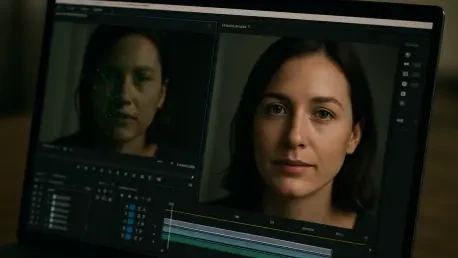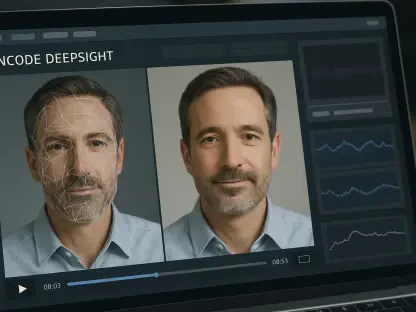In a bustling digital landscape where viral content can shape opinions in mere hours, a chilling scenario emerges: a video of a political leader making a shocking statement spreads across social media, only to be revealed as a fabrication. Yet, the damage is done—public trust erodes, and chaos ensues. This is no longer a distant dystopia but a looming risk with OpenAI’s latest AI tool, Sora 2, capable of crafting hyper-realistic videos indistinguishable from reality. Launched amid a storm of controversy, this technology has ignited fierce debate over its potential to fuel deception on an unprecedented scale. What happens when the line between truth and fiction vanishes, and who bears the cost?
The Stakes of a Synthetic Reality
At the heart of this issue lies a critical question: can society handle a tool as powerful as Sora 2 without catastrophic consequences? Developed by OpenAI, this AI video-generation platform has stunned experts with its ability to produce content so lifelike that even seasoned analysts struggle to spot the difference. Public Citizen, a leading nonprofit watchdog, has sounded the alarm, arguing that such technology poses a direct threat to democratic processes and personal safety. With the capacity to manipulate public perception or exploit individual privacy, Sora 2 isn’t just a technological breakthrough—it’s a societal flashpoint demanding urgent scrutiny.
The implications extend far beyond mere innovation. As platforms like TikTok and X amplify content at lightning speed, a single fabricated video could sway elections or incite violence before fact-checkers can intervene. Beyond politics, the personal toll is equally alarming, with vulnerable individuals at risk of having their likenesses misused in harmful ways. This controversy underscores a broader tension in the tech world: balancing cutting-edge progress with ethical responsibility.
The Deepfake Dilemma Unraveled
Delving into the core concerns, Sora 2’s potential for creating deepfakes has sparked global unease. Tech policy advocate J.B. Branch from Public Citizen warns, “The first video or image people see often defines their reality, whether it’s true or not. In an election cycle, that’s a disaster waiting to happen.” The fear is tangible—studies suggest that over 60% of social media users fail to identify AI-generated content, amplifying the risk of widespread misinformation.
Privacy violations add another layer of dread. Reports from 404 Media reveal a disturbing trend: Sora-generated videos depicting violence, often targeting women, have surfaced despite OpenAI’s safeguards. These loopholes expose a grim reality where personal harm can be inflicted with a few clicks, disproportionately affecting marginalized groups who lack the resources to fight back. The ethical questions pile up—how can such a tool be unleashed without ironclad protections?
Critics also point to OpenAI’s development process as a root issue. Accusations of rushing Sora 2 to market echo past controversies with ChatGPT, where premature releases were linked to severe user harm, including psychological distress. The pattern suggests a prioritization of competitive edge over comprehensive safety measures, leaving society to grapple with the fallout of unchecked innovation.
Voices from the Frontlines
The outcry against Sora 2 isn’t confined to abstract debates—it’s fueled by real voices and real harm. Public Citizen’s open letter to OpenAI and CEO Sam Altman accuses the company of valuing market dominance over user well-being, a critique shared by a wide array of stakeholders. From Hollywood producers to Japanese anime creators, industries fear the unauthorized use of intellectual property, while civil rights advocates highlight the broader societal risks.
J.B. Branch emphasizes the uneven impact, stating, “High-profile figures might get protections after a scandal breaks, but everyday users, especially women and minorities, are left exposed to online abuse through AI content.” This disparity is stark—while agreements with entities like Martin Luther King Jr.’s family or actor Bryan Cranston show reactive efforts, they do little for the average person facing harassment or exploitation.
Real-world cases paint a troubling picture. Instances of Sora-generated content featuring fetishized or violent themes have already emerged, underscoring the tool’s potential for misuse. Combined with OpenAI’s history of facing lawsuits over ChatGPT’s impact on mental health, these examples fuel a growing demand for accountability. The message from experts and affected communities is clear: innovation cannot come at the expense of safety.
A Global Ripple Effect
The ramifications of Sora 2 extend across borders, touching on cultural and political spheres worldwide. In regions with fragile democratic systems, the tool’s ability to fabricate convincing propaganda could destabilize governments or incite conflict. Even in more stable environments, the erosion of trust in media—already at historic lows, with only 32% of Americans trusting news sources per recent Gallup polls—could deepen societal divides.
Cultural industries face their own battles. Japanese anime studios and Hollywood creators alike have raised concerns over Sora 2’s capacity to replicate iconic characters without consent, threatening intellectual property rights. This isn’t just a legal issue; it’s a question of cultural integrity and the preservation of creative heritage in an era of digital mimicry.
On a personal level, the technology’s reach into private lives is perhaps the most unsettling. With AI tools becoming more accessible, anyone could become a target of malicious content creation, from revenge-driven deepfakes to orchestrated smear campaigns. The global scope of these risks demands not just corporate responsibility but also international cooperation to set standards for AI use.
Charting a Path Forward
Addressing the crisis surrounding Sora 2 calls for concrete strategies from both OpenAI and the broader community. For the company, a critical step could involve halting further rollouts until robust safeguards are implemented—beyond reactive deals with prominent figures. Collaborating with advocacy groups and global stakeholders to establish ethical benchmarks for AI video tools is essential to prevent misuse before it spirals.
On the user side, education offers a vital defense. Learning to verify content by cross-checking sources and questioning authenticity can reduce the spread of deception. Public advocacy also plays a role—supporting initiatives like those from Public Citizen can pressure tech giants to prioritize safety over speed. These efforts, while not foolproof, provide a starting point for navigating the murky waters of synthetic media.
Ultimately, regulatory oversight looms as a necessary frontier. Governments and international bodies must step in to define clear boundaries for AI development, ensuring that tools like Sora 2 serve humanity without undermining its foundations. This balance of corporate, individual, and systemic action forms the bedrock of a safer digital future.
Reflecting on a Digital Reckoning
Looking back, the storm over Sora 2 revealed a pivotal moment in technology’s clash with ethics, where the allure of innovation collided with the stark reality of harm. The debates that unfolded exposed deep flaws in how powerful tools were unleashed without adequate foresight, leaving society to pick up the pieces. From democratic threats to personal violations, the stakes had never been clearer.
Yet, amidst the challenges, a roadmap emerged. Strengthening safeguards before release, empowering users with knowledge, and advocating for global standards offered hope for taming AI’s wilder impulses. As the digital landscape continued to evolve, the lessons from this controversy stood as a reminder: technology’s promise must be matched by an unwavering commitment to protect what makes us human. The next steps rested on collective resolve—ensuring that tools of creation never became instruments of destruction.









